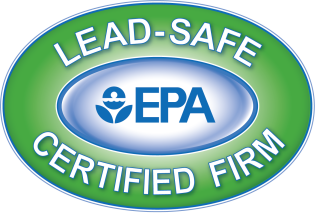Do you smell that? Did you forget to wash your socks? Does the dog need a bath? I cleaned everything, and I can’t find it! What could it be? If sounds like your home or office, you might have a problem with mold and MVOC’s.
MVOC’s or Microbial Volatile Organic Compounds are compounds created by fungi and bacteria during their metabolic processes. MVOC’s can be detected by simply smelling the air. The smell of MVOC’s has been compared to stinky socks, locker room odor, wet dog, or old cheese. They give off a distinctly musty, moldy smell. There are over 200 compounds that have been identified as MVOC’s. MVOC’s can be dangerous and even toxic to humans. If you smell odors like this, you may have a mold problem in your building.
There are also compounds called VOC’s or volatile organic compounds that can be produced by household cleaners, paints, aerosols, disinfectants, air fresheners, glues, and even furniture. VOC’s are not caused by microbes, and give off a distinctly chemical scent. VOC’s can cause health problems as well.
WHAT HEALTH PROBLEMS CAN MVOC’S CAUSE?
Mold (including those that produce MVOC’s) growing in buildings can cause a myriad of health problems including asthma, allergic reactions, and even poisoning from exposure to mycotoxins. Mycotoxins, literally ‘fungus poison’ in Latin, are secondary metabolites (including MVOC’s) that are produced by molds, and are not living organisms. These chemical substances can cause many health problems ranging from mild to severe. Even if you are not allergic to mold, you can be affected by mycotoxins. Some of the symptoms associated with mycotoxins include (but are not limited to): coughing, wheezing, skin rashes, sleep problems, vertigo, headache, fatigue, and more. For more information about mycotoxins and their health affects go to: https://www.branchenvironmental.com/when-mold-is-more-than-allergies/
MVOC’s can actually be helpful if you have a mold problem. The presence of the musty smell can alert you that you may have mold growth in the building. You may not know about the problem without the smell! However, this is not a good smell to find!
WHAT CAN CAUSE MVOC’S TO FORM?
Moist or wet areas in a home or office building are havens for fungi and bacteria to grow. There are only four things needed for mold growth: oxygen, moisture, a food source, and warmth. If you can smell mold, chances are, it is producing MVOC’s. MVOC’s are produced by the fungi as they digest their food. Unlike animals or bacteria, fungi grow using filaments or hyphae that make up their bodies (mycellia). Fungi digest organic matter externally before absorbing the nutrients. Partially because of this external digestion, MVOC’s are formed as the food source breaks down. Causing the characteristic musty odor in the presence of mold.
WHAT KINDS OF DAMAGE CAN MVOC’S CAUSE?
There have been over 200 different chemical compounds identified as MVOC’s that are produced by fungi and bacteria. The chemicals produced include alcohols, arsenics, benzenes, toluenes, acids, sulfur compounds, and many more. For a comprehensive list of chemical compounds go to http://bioinformatics.charite.de/mvoc/index.php?site=browse. This list is a database for scientists studying the different compounds to find published literature about each chemical compound. It is difficult to study and separate the effects of the different chemical compounds produced by fungi, since many compounds may be produced by many different molds or bacteria in the same location.
WHAT DO I DO NOW?
If you can smell musty odors similar to old cheese, stinky socks, or wet dog, you may have a mold problem. Search for the source of the mold by looking in places that can accumulate moisture: behind kitchen or bathroom sinks, in crawl spaces, anywhere in your home that could be damp.
You know what they say, “Prevention is worth 9/10 of the cure!” Indoor mold growth can be prevented by simply controlling moisture and controlling humidity indoors. Using vent fans every time you shower and keeping surfaces dry helps prevent mold growth.
You may be able to clean surface mold on the walls, ceilings or floors of your home that are less than ten square feet by using gentle detergents, vinegar, baking soda, and water. For more information about how to clean small areas of mold go to https://www.branchenvironmental.com/a-simple-guide-to-cleaning-mold/
If you see areas larger than ten square feet, or there is a musty smell you can’t identify, it may be time to call on the professionals.
WE’RE HERE WHEN YOU NEED US.
Don’t let MVOC’s cause problems in your home! Remember what to do: ventilate to remove moisture and clean surface areas of mold as soon as you see them forming. If it still smells musty, call us!
Call Branch Environmental. We’re experts not only at mold removal, but at determining and remediating the underlying causes. From hidden mold sources to major contaminants. We can identify exactly what is going on in your home and rid it of environmental toxins, often for good.

